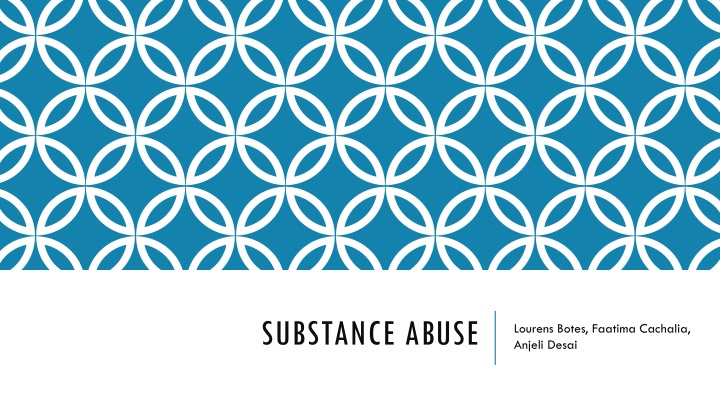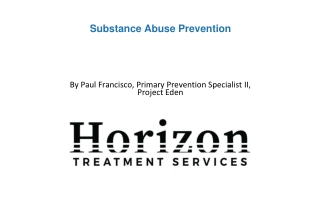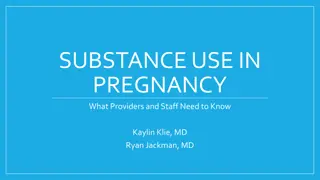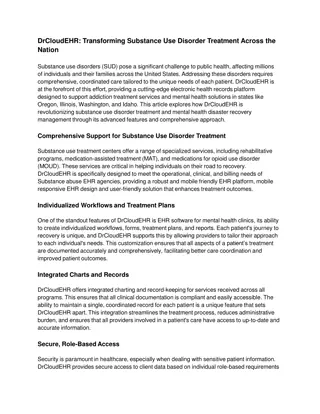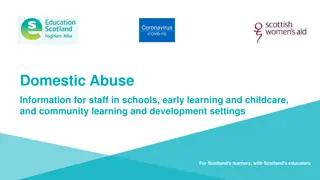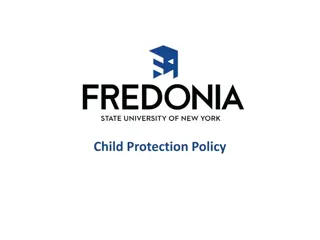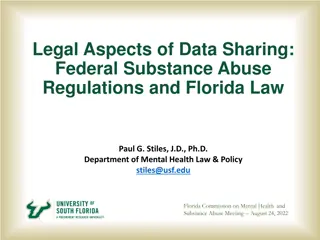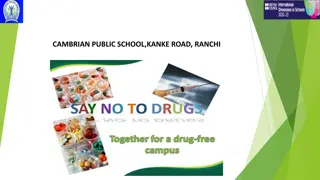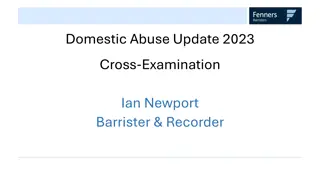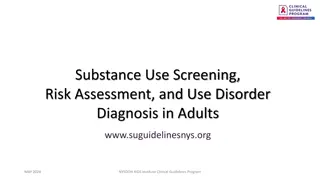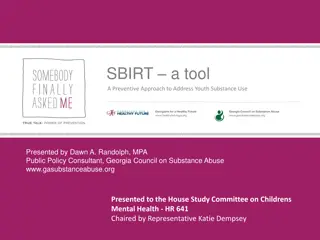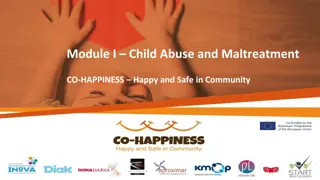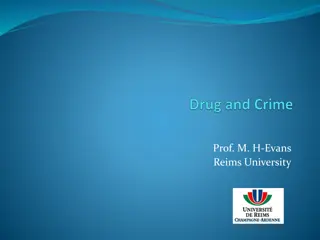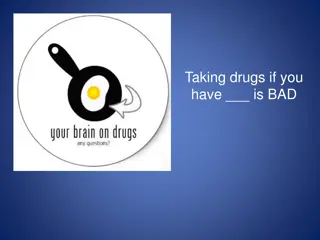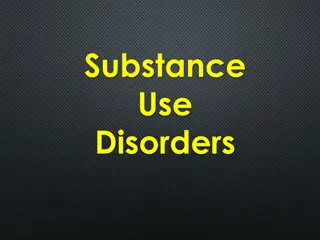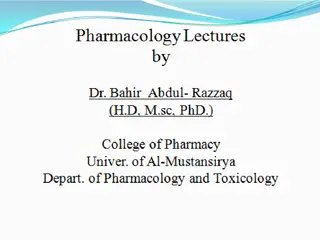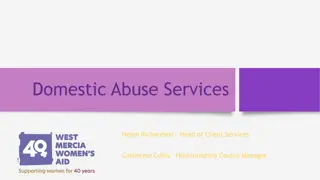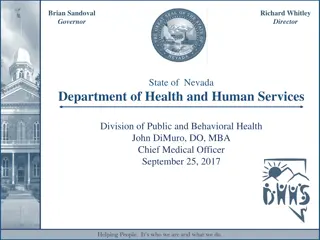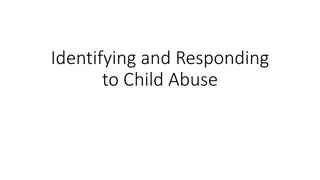SUBSTANCE ABUSE
Substance use disorders encompass a range of problematic behaviors related to substance abuse. This includes symptoms of intoxication, withdrawal, and mental disorders induced by substances. The DSM-5 outlines criteria for diagnosing these disorders, categorized by severity. The prevalence of substance abuse, particularly alcohol, has significant social impacts, contributing to violence, unemployment, and legal issues. Genetic, biological, environmental, and pharmacological factors all play a role in the development of substance use disorders.
Download Presentation

Please find below an Image/Link to download the presentation.
The content on the website is provided AS IS for your information and personal use only. It may not be sold, licensed, or shared on other websites without obtaining consent from the author.If you encounter any issues during the download, it is possible that the publisher has removed the file from their server.
You are allowed to download the files provided on this website for personal or commercial use, subject to the condition that they are used lawfully. All files are the property of their respective owners.
The content on the website is provided AS IS for your information and personal use only. It may not be sold, licensed, or shared on other websites without obtaining consent from the author.
E N D
Presentation Transcript
SUBSTANCE ABUSE Lourens Botes, Faatima Cachalia, Anjeli Desai
DEFINITIONS Substance use disorders: inappropriate use of a substance Substance related disorders are divided into 2 groups 1) Substance use disorders 2) Substance induced disorders: a) Intoxication (reversible set of symptoms due to recent use/exposure to a substance) b) Withdrawal (behavioural, physical, and cognitive symptoms that occur due to the abrupt reduction or cessation of a substance) c) Substance/ medication induced mental disorders (e.g. psychotic disorders, bipolar and related disorders, depressive disorders, anxiety disorders, sleep disorders, sleep disorders, delirium, neurocognitive disorders) DSM-5 recognises 10 substance related disorder classes: Alcohol, Caffeine, Cannabis, Hallucinogens (separate categories ), inhalants, opioids, sedatives, hypnotics, anxiolytics, stimulants, tobacco and other Each class of drug has its own criteria set for a use disorder.
DSM-5DIAGNOSIS The substance use disorders follow a standard set of criteria Require 2 or more of 11 problematic behaviours occurring in a 12 month period leading to clinically significant impairment or distress 11 symptoms involve overall groupings of impaired control, social impairment, risky use and evidence of tolerance or withdrawal. Rated for severity : mild (2-3 symptoms) moderate (4-5 symptoms ) , severe (6 or more )
PREVALENCE AND SOCIAL IMPACT According to WHO harmful alcohol use was responsible for 5.3% of deaths and 5.1% of the burden of disease and injury, equivalent to 132.6 million disability-adjusted life years (DALY). Alcohol remains a primary substance of abuse in South Africa and 1 in 10 deaths are associated with alcohol use. Between 7.5-31.5% of our population have an alcohol problem or are at risk of developing one. Currently we are ranked 6thin the world for the most alcohol consumption Of those who consume alcohol in SA, 48% of men and 32% of women binge drink Substance use is associated with an increased exposure to violent crime (as either a victim or perpetrator), gender based violence, unemployment, school dropout, and being in conflict with the law.
AETIOLOGY OF SUBSTANCE RELATED DISORDERS Combination of genetics, the individual s biology, person s environment and the substance itself contribute to substance use disorders Genetic factors are estimated to contribute 40-60 % of the variability of the risk for addiction Family background raised in homes affected by mental illness and/or substance use Pharmacological properties of the drug itself contribute to abuse. E.g. alcohol, opioids and anxiolytics can produce rapid relief of anxiety Stimulants relieve boredom and fatigue an provide a sense of energy and increased mental alertness Hallucinogens provide a temporary escape from reality The above properties contribute to misuse.
REWARD PATHWAYS OF SUBSTANCES Mesolimbic pathway synonymous with the reward pathway Release of dopamine from ML pathway into the nucleus accumbens regulates motivation and desire for rewarding stimuli and facilitates re-enforcement and reward related motor function learning May also play a role in the subjective perception of pleasure Dysregulation of this pathway plays a significant role in the development and maintenance of addiction. Common substances have been shown to increase extra cellular levels of dopamine within the ML pathway, these activations are accompanied by the perception of reward This creates increased motivation to repeat the same behaviour which caused it.
CASE SCENARIO 66 year old male, known hypertensive on treatment. Brought in by family members with a history of confusion, nausea and vomiting. Significant findings on examination: patient appeared dehydrated with a tachycardia of 115, an HGT of 2.6, and smelled of alcohol. All other systems examined well Emergency management included fluid resuscitation and correction of hypoglycaemia. Further history from the family revealed that he has been drinking 8-10 beers per day since the passing of his wife. He has lost interest in daily activities, struggles to sleep, is always irritable, skips meals and is poorly groomed. He has had 2 previous similar presentations. What s the next step?
CAGE QUESTIONNAIRE Simple screen used to assess presence of alcohol use disorder Can be easily incorporated into consultation and is quick to perform. Any positive response or overly defensive answer suggests problematic use
DSM-V- alcohol use disorder A maladaptive pattern of substance use leading to clinically significant impairment or distress, as manifested by 2 or more of the following, occurring at any time in the same 12-month period: DSM-5DIAGNOSIS Alcohol is often taken in larger amounts or over a longer period than was intended. There is a persistent desire or unsuccessful efforts to cut down or control alcohol use. The substance use disorders follow a standard set of criteria A great deal of time is spent in activities necessary to obtain alcohol, use alcohol, or recover from its effects. Require 2 or more of 11 problematic behaviours occurring in a 12 month period leading to clinically significant impairment or distress Craving, or a strong desire or urge to use alcohol. 11 symptoms involve overall groupings of impaired control, social impairment, risky use and evidence of tolerance or withdrawal. Recurrent alcohol use resulting in a failure to fulfil major role obligations at work, school, or home. Continued alcohol use despite having persistent or recurrent social or interpersonal problems caused or exacerbated by the effects of alcohol. Rated for severity : mild (2-3 symptoms) moderate (4-5 symptoms ) , severe (6 or more ) Important social, occupational, or recreational activities are given up or reduced because of alcohol use. Recurrent alcohol use in situations in which it is physically hazardous. Alcohol use is continued despite knowledge of having a persistent or recurrent physical or psychological problem that is likely to have been caused or exacerbated by alcohol. Tolerance, as defined by either of the following: A need for markedly increased amounts of alcohol to achieve intoxication or desired effect. A markedly diminished effect with continued use of the same amount of alcohol.
MANAGEMENT LEVELS OF PREVENTION Primary Prevention Educational campaigns Community and family interventions Careful prescribing and education Legislation Policing of illegal drug trafficking
MANAGEMENT - LEVELS OF PREVENTION Secondary prevention Early identification and effective management of prevent harm from substance misuse Bio-psycho-social approach
MANAGEMENT - LEVELS OF PREVENTION Managing withdrawal: Early recognition: General supportive measures, nutritional supplementation (including thiamine, folic acid and multivitamins) and the use of benzodiazepine s. Withdrawal: symptoms range from anxiety, tremors, nausea and vomiting to seizures and hallucinosis. Benzo of choice in withdrawal = Diazepam Delirium tremens occurs in 5% of hospitalized patients and includes confusion, agitation, perceptual disturbances, mild fever and autonomic hyper arousal. Dose: 10mg stat. then 5mg in 15- 30 minute intervals till calm. Tapered over a few days Haloperidol 2-5 mg per day in patients with alcoholic hallucinois Treatment of alcohol dependence (carefully selected patients who are fully co-operative) Disulfaram Naltrexone Acamprosate
MANAGEMENT - LEVELS OF PREVENTION Psychosocial approach Depression and anxiety are often associated with substance use therefore it is important to identify co-existing psychological illness s and manage as appropriate. Involvement of social worker and support groups to aid rehabilitation. To put in place adequate support structures (family and friends) **Challenges in our setting: rehabilitation facilities are not easily accessible** Tertiary prevention Overlap on above Inpatient/outpatient care Psychosocial rehabilitation Self help organisations (AA, NA)
MANAGEMENT CONTINUED Motivational interviewing has also been shown to help persuade patients to make their own case for change
COMPLICATIONS WERNICKE KORSAKOFF SUNDROME (thiamine/B1 deficiency ) 1. Wernicke encephalopathy : confusion/opthalmoplegia/ ataxia 2. Korsakoff psychosis : amnesia/confabulation/psy chosis Malignancy Oral cavity oesophagus Lage intestine Liver and pancreas Birth defects Foetal alcohol syndrome Psychosocial MVA/PVA Crime Violence Spouse and Child abuse Job loss Divorce Neuropsychiatric : Wernike korsakoff syndrome Cortical atrophy Alcohol induced dementia Myopathy Depression and suicide Peripheral neuropathy Alcohol Withdrawal Gastrointestinal Pancreatitis Liver disease Oesophageal bleeding Gastritis Intestinal malabsorption Cardiovascular Cardiomyopathy
REFERENCES Black, D.W. and Andreasen, N.C. (2014). Introductory textbook of psychiatry : [DSM-5 ed.]. Washington, Dc: American Psychiatric Publ. Masiko, N &Selby, X. 2017. Substance Abuse in South Africa, its linkages with Gender Based Violence and Urban violence. CSVR Fact sheeton Substance Abuse in south africa. Available : <https://www.saferspaces.org.za/uploads/files/Substance_Abuse_in_SA_- _Linkages_with_GBV__Urban_Violence.pdf> Psychiatry - DSM-V Probst C, Parry CD, Wittchen H-U, Rehm J. The socioeconomic profile of alcohol-attributable mortality in South Africa: a modelling study. (2018) BMC Med. 16:97. doi: 10.1186/s12916- 018-1080-0 Schneider M, Norman R, Parry C, Bradshaw D, Pluddemann A, Collaboration SACRA. Estimating the burden of disease attributable to alcohol use in South Africa in 2000. S Afr Med J. (2007) 97:664 72. Available online at: https://www.ajol.info/index.php/samj/article/view/127295
